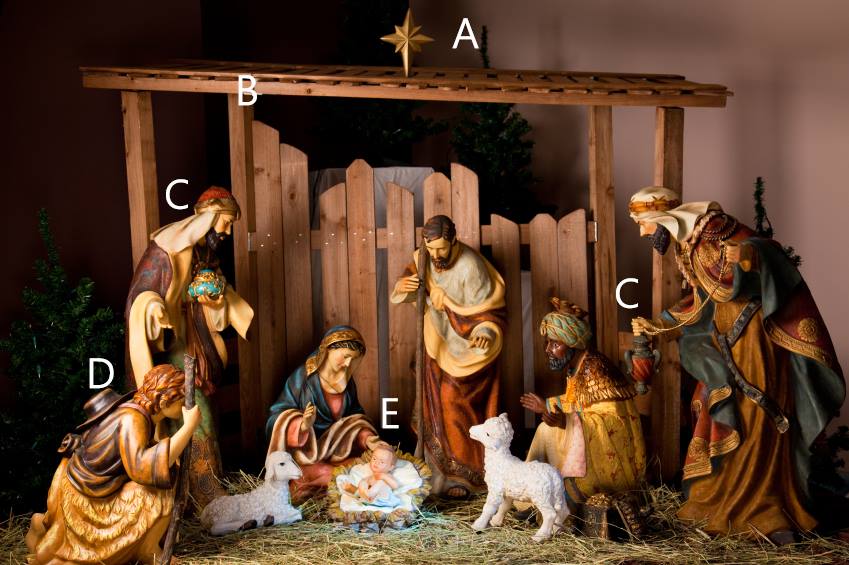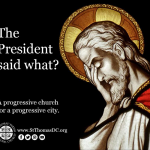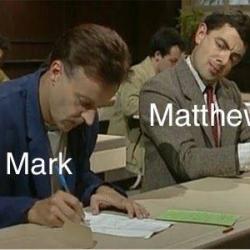
Jeremiah Bailey shared a great idea for an activity for students. Give them the nativity creche manger scene and ask them to identify which items come from Matthew and which come from Luke. Perhaps consider giving bonus points for those who realize that some details – such as the barn itself – are not actually mentioned.
On my Butler web space (which I have not updated in a very long time) you can find some class notes of mine from a course on the historical Jesus, which includes material that I tend not to focus on in that course but rather in a one-semester course about the whole Bible that I also have taught fairly regularly over the years at Butler. The infancy stories really do clue one in to the major themes of the Gospels of Matthew and Luke. And on the historical level, they illustrate well the contradictions that can exist between the Gospels – not just differences, such as that one has shepherds and the other magi, but actual discrepancies regarding the dates and geographical movements of the main characters. Here’s a snippet from one of the pages, about the infancy story in Luke and the fact that Jesus was not “born in a barn”:
Rethinking this passage’s meaning might seem to spoil a lot of Christmas plays and nativity sets. It may, however, actually help turn what has become a commercialized myth into a historically-rooted and perhaps even a believable event. The birth of Jesus was not the birth of a mythical, imaginary figure, nor of a divine being who only pretended to be human: this is a real, concrete event in space and time, and Luke’s story can be seen to accurately reflect the cultural setting into which Luke tells us that Jesus was born. This does not mean that Luke’s narrative gives us accurate historical details – the best verdict a historian can give on this subject is ‘not proven’ – but certainly the story itself reflects the cultural context into which Jesus was born. Whether this is simply realistic writing on Luke’s part or the result of Luke having access to and providing his readers with accurate historical information is another matter entirely.
And here’s the start of a page about the differences between the two: “Matthew’s and Luke’s accounts, for the most part, are like two separate jigsaw puzzles: each gives a consistent theological portrait of Jesus, and we can learn from looking at both of them, but if we simply mix and match pieces from two different puzzles we do not thereby make one bigger puzzle that incorporates both. Rather, as a rule, mixing two puzzles just makes it that much harder to put either of them together and see what either of them is supposed to be a picture of!”
On the cultural background of Luke’s story, see Ian Paul’s recent post, which is full of helpful diagrams of first-century homes. Please do also see some of my posts from past years related to these themes, such as “Spoiling Christmas vs. Spoiling Q,” “The Difference Makes Q,” and “Why I’m Glad Matthew’s Infancy Narrative Isn’t Literally True.” There is still more on the topic, with links to these and other earlier posts of mine, in my post from last year, “Truth and Christmas.”













